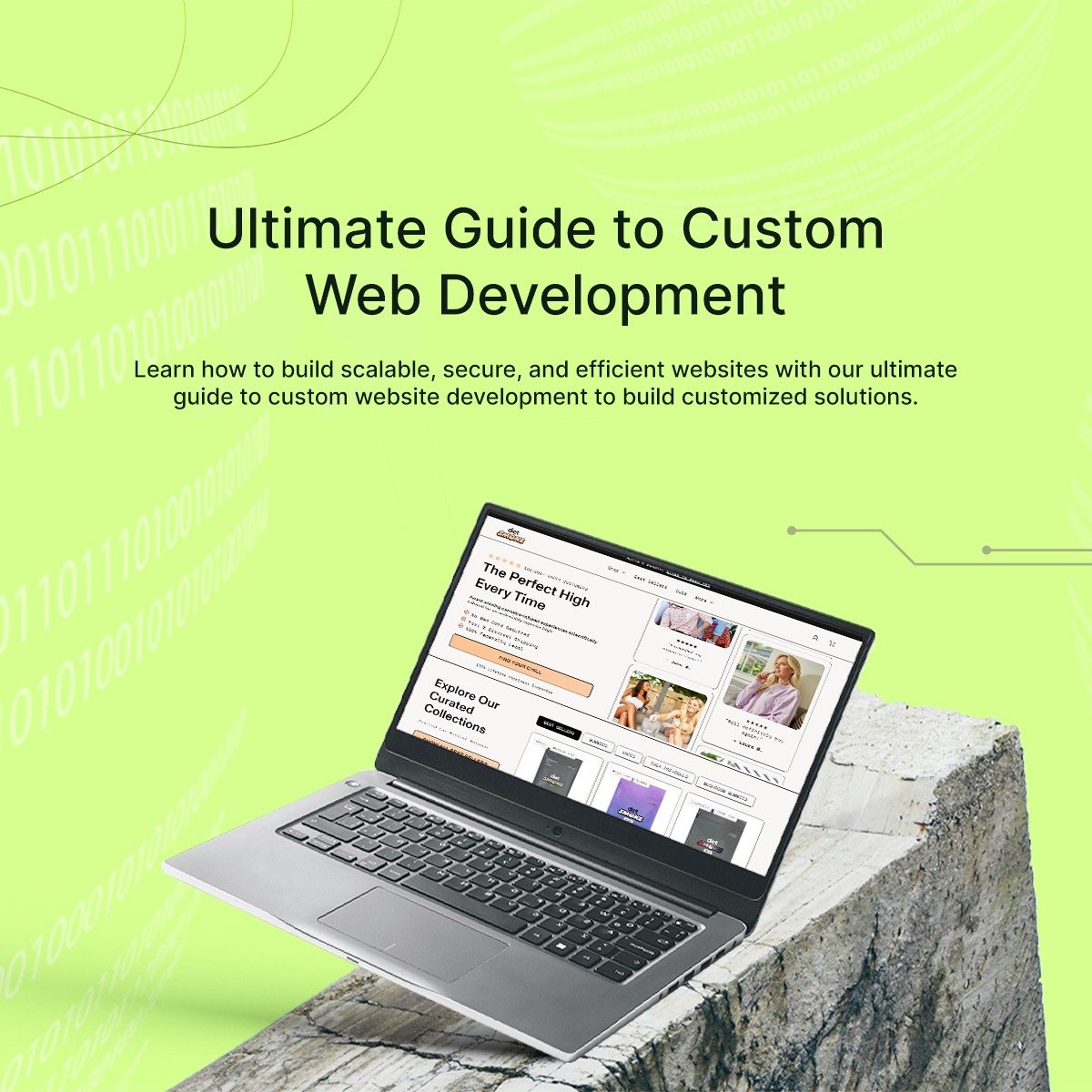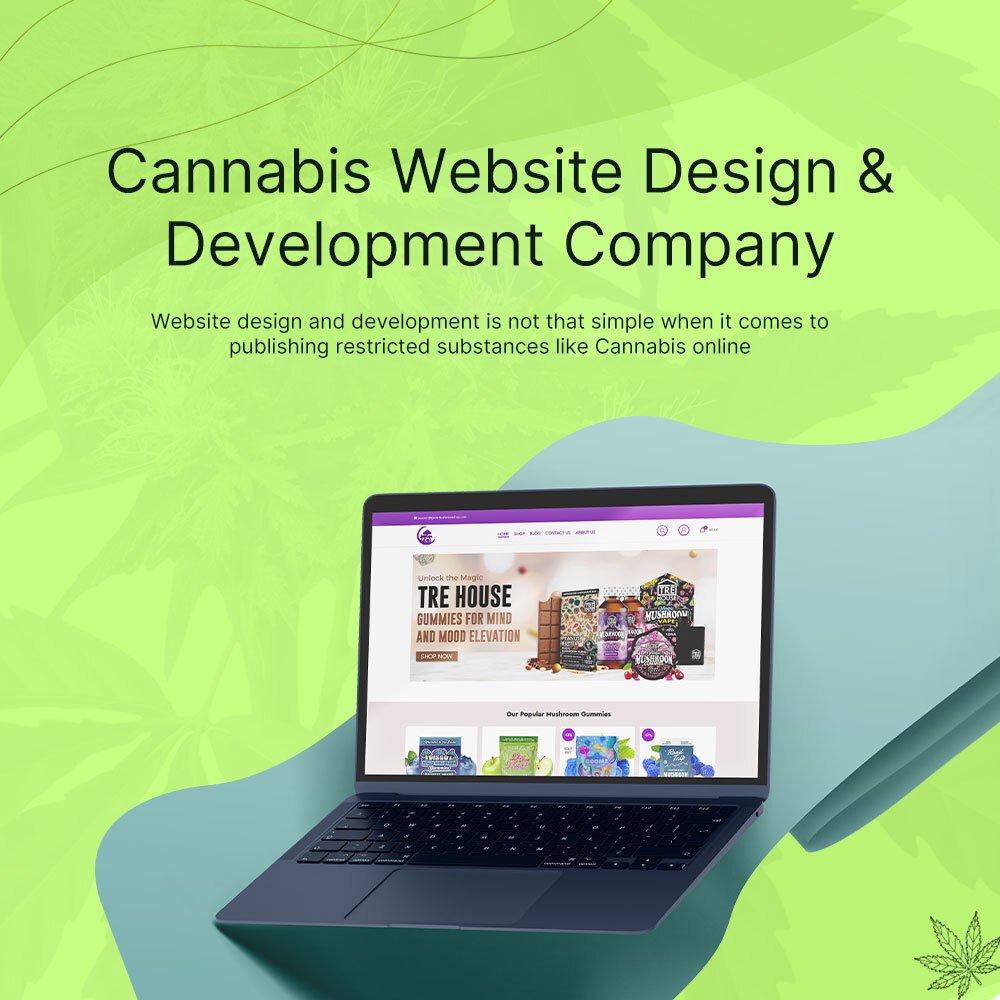Most of the web apps and websites fail to deliver because they don’t have a purpose. It’s important to understand that building the latest website is not just about following the latest trends or using the latest technology to stay relevant. The real worth of a website shows when it provides a solution to a real-world problem in the most streamlined way possible.
To give you a better understanding on how to develop a winning website or web app, we have compiled this guide with all the factors and steps that need to be followed while designing a well-equipped website. By following our comprehensive guide, you will learn how to build robust, user-focused web applications that can make an impact.
In this article, we are going to present a comprehensive roadmap to build customized websites and web applications that solve real-world problems seamlessly with a focus on the end user. With our guidelines, you will learn how to turn an idea into a functional website that drives business growth using the power of innovative technology.
What is Custom Website Development?
By now you may have used many web applications or web apps on a daily basis without giving much thought about how they are built or developed. But the unknown truth is that most of these websites are really generic cookie cutting solutions.
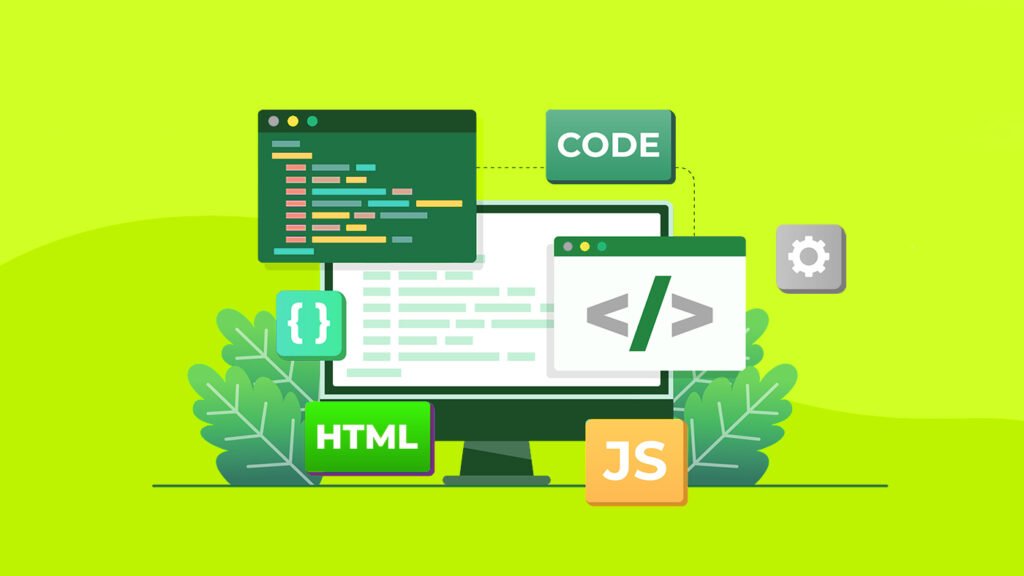
Whereas the term custom website development truly refers to a website or web app that is crafted to cover your business needs. The idea behind designing and developing a bespoke website is to provide a solution for niche specific problems that target a specified audience.
Why Custom Web Development is Better Than Template Based Websites?
Unlike template-based web apps, custom websites are designed to deliver performance, flexibility, and scalability in the long run. So much so that you can even reshape the user experience, technology stack, options and features. Hence, with custom web development, you can always alter the features instead of shifting your business model.
With custom web design and development, you get to control the development process at every step of the way in order to ensure that everything remains perfect to your requirements. In simple words, custom website development is not like a one-size-fits-all approach. You can always get a tailor-made experience that aligns with your business experience.
9 Steps to Custom Website Development Process

Building a successful website is not just about coding or programming; and it’s about planning, strategy, and delivering a digital product that can actually solve real-world problems. Starting from the initial requirement gathering and brainstorming to launch and support, each process of the development cycle defines how a website performs and meets the business requirements. So, let’s go through each step of custom website design and development to understand how a winning web platform is developed.
Build Your Custom Website and Store
Step #1: Understand the Purpose of the Website Development
Before jumping into the development process, a custom website developer should understand why the website or web app should come into existence. The first thing to do is to identify the purpose or foundation of the web app, which can be learned from the requirement-gathering process.
Whether it’s about streamlining business operations or building an eCommerce platform, the idea behind custom website development should be resolving real-world problems or at least fulfilling a business goal. This first step lays the blueprint for the whole development process to state how the success looks like.
Step #2: State the Functionalities
Once you understand what type of purpose the website serves, it’s time to build the website as per requirements. Based on the core business requirements, the custom web developer can add anything from login functionalities and data management to search filters and payment processing.
While defining these functionalities and features for a website, make sure to understand what the website will do and how the users may interact with it. This is the point where you build the front end and connect the back end accordingly.
Always remember that the design and features of your website should align with the requirement/purpose of your app in a streamlined way, so never go for overdoing things in the custom website development process.
Step #3: Analyze the Market Thoroughly
Sometimes, great ideas are not just enough, but you also have to understand their scope. Therefore, it’s important to analyze the market for the targeted audience and competitors in the landscape of your defined niche. Market research can also help you realize if there is any scope for your business and how it will stand out in a competitive market.
While analyzing your targeted audience, make sure to understand their persona and pain points. See how your website and its functionalities can resolve their problems. At the same time, analyze your competitors to see how you can fill gaps in the market. Perform surveys and gather insights from the users. Based on this research, you can design and develop functionalities that fit the business needs and align with the user’s persona.
Step #4: Choose the Right Technology Stack
Now that you have understood what you need to build, it’s time to collect the tools for custom website design and development. This set of tools is called the ‘technology stack‘ which includes the programming languages, frameworks, and databases that give the real power to a website or web app.
While choosing the technology stack, especially the front-end and back-end technologies, make sure to keep factors like scalability, security, and performance requirements in mind. Whether you choose React.js or Next.js for the front end or Node.js for the back end, your technology stack choice will define the reliability of your website and its relevance to your business goals.
Step #5: State the Workflow
A successful website is not just about integrating the right features; it’s much more about how a user interacts with those features. This is the point where you have to plan the journey to recreate the whole user experience. From the point where a user interacts with a web page to the point where they can complete the task, everything should be stated in a workflow.
The idea of stating the workflow is to ensure that the website offers an interactive experience that is seamless throughout. Well-designed workflows can keep the users engaged on the web pages, which is highly advantageous for eCommerce websites, especially where a strong call to action is always required.
Step #6: Creating a Minimum Viable Product (MVP)
Now you don’t have to put all your effort right into everything in order to give the final product. First, you can build a Minimum Viable Product, better known as MVP, in the custom website development world. Minimal Viable Product is the most basic version of your website with the most basic features and functionalities.
The idea behind developing a Minimum Viable Product of a website is to gather early feedback from the client or end-user in order to get their feedback or approval for the full-scale development. Think of the MVP website as a demo version of a game. You get a basic version with the necessary features only.
With an MVP product, businesses also get more time to market and test their idea in order to validate the concept. Hence, you can save a lot of time and website development resources at the early stage.
Step #7: Time to Develop
Finally, when you get all the concepts, align the workflows, and test the idea, it’s time to go for full scale website development. This is the point where businesses are focused on custom website design and development with the complete involvement of teams and stakeholders.
From UX/UI design to discussing front-end and back-end development, this is the step where your web app starts taking the expected shape. This step can be the most time-consuming one as the custom website developer has to stick with the deadlines while ensuring that everything is built as expected. Also, it is important for the website developers to test functionalities on their end before pushing things to the next phase.
Step #8: Test and Launch the Website
Make this your top priority in custom website development. You can never launch a website or a web app until it has been tested properly. From functionality to compatibility, everything should be tested including non-functional factors like security and speed.
For more efficient testing, it’s better to combine manual and automation testing methods as it ensures every aspect of the website is working flawlessly. Once the testing phase is complete and the bugs have been resolved, it’s time to launch the website.
Keep in mind that launching a website is not just about uploading it on a server; you should always have a launch plan in place that can attract more users while targeting the right audience.
Step #9: Post Launch Support and Maintenance
Launching your customized website is just the beginning of a long journey. The final step in custom website development is post launch support and maintenance, where the only goal is to keep your end user happy while ensuring that your tailor-made website is running smoothly without any technical issues.
This step can keep on going as long as the website is on a server and live for the public audience to access. Therefore, it is crucial for the developers and technical support teams to ensure that the website experiences the lowest downtime.
Post launch support also includes keeping the website updated with the latest features and ensuring its responsiveness on new browsers or operating systems. With a solid support plan, you can always remain relevant in the changing world of technology trends while providing your end user with a quality experience.
What is the Benefit of Custom Website Development?
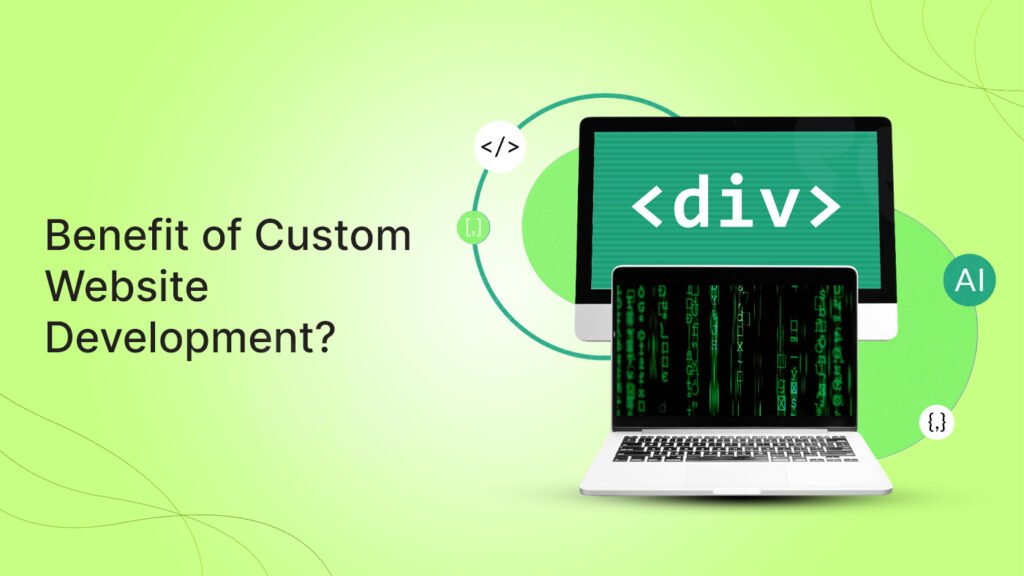
Let’s face the fact that traditional software is becoming a thing of the past. Businesses that still rely on outdated systems or software need to rethink their ways of handling business. In the modern-day world, remaining unique is one factor that can keep you ahead of the competition. This is where customized web applications step in as the thing of the future with a range of benefits.
Multi-channel Visibility
Having a website gives your business multi-channel visibility across all devices without the condition of devices or platforms. With a website, your audience can reach your business from laptops, desktop PCs, smartphones, or any device that supports a web browser and internet connection.
Hence, you don’t have to worry about providing updates, device compatibility issues, or operating systems. With a website, your business is always up and running on any device at any time.
Saves Costs in the Long Run
For some businesses, customized website development may seem like an expensive option. But think again, and it’s more like a long-term investment. Web apps cut the need to install updates, upgrade features over time, and use multiple versions of a device.
With everything being handled on a centralized server, you get to save local infrastructure setup and maintenance costs. Hence you can always focus on expanding the business and adapting innovation while your business reaches the right audience online.
Best User Experience with Tailored Features
Ready-made template-based software rarely offers the options or features required by your targeted user. With customized web application development, every feature is designed according to your user’s persona and business requirements.
As a result, you get a personalized website that delivers a user-friendly experience. With a web app that is designed by keeping the end user in mind, there is no chance that you can lose engagements or leads. As a result, you get higher growth and better return on investments.
Scalable With Business Growth
As the business continues to grow, your needs and set up to expand that business also require better resources. This is where custom website development excels at delivering a design and development environment that is easy to expand. Whether it is about adding new features, updating the design, or increasing the data storage, custom website design & development gives you the freedom to do it all.
Unlike template-based websites, custom web design and programming do not limit you to staying in a bubble of limits. As your business evolves, you can always redesign the website with new features or increase the storage to accommodate more users. Hence, custom web development solutions are more like your one-time investment that grows as per business needs.
Say Goodbye to Updates
Unlike the issues you face with mobile applications, your users won’t have to download new application updates and you won’t have to release new patch updates. With the custom website development, updates and bugs that are released apply centrally.
Ultimately, the website release always offers users the latest versions. Hence, it means the users always get a smooth experience with the latest options and features without needing to update anything. As a result, you get the least downtime for your business and offer the maximum uptime for better availability for your audience.
Better Collaboration and Integration
Custom web development is the right option for integration and collaboration among teams. Whether it’s about managing projects, keeping track of sales, or making coordination among the departments, custom website design and development improves communication and easily integrates with your existing systems.
For example, if you have a warehouse management system running on-site, a customized website can integrate with that existing system to provide insights and updates via web browsers. Hence the business can easily keep track of their sales operations or check real-time data via any browser on any device.
With real-time data updates and communication/collaboration tools, a custom website ensures that everyone stays on the same page. Without worrying about incompatibility issues, businesses can easily leverage custom website design and development to streamline operations as per their business needs.
Enhanced Security
Generic websites come with generic security standards. This is where custom web development allows you to integrate advanced security protocols to keep the data protected. Based on business requirement levels, businesses can leverage encrypted data transmission, secure authentication, and multi-factor authentication layers of security.
Enhanced security is also important to remain competitive in the modern-day world since the new age is all about the use of data. This is where businesses have to focus on keeping their user data secure from unwanted breaches to safeguard information like logins, passwords, and payment method information.
5 Major Types of Websites and Web Apps
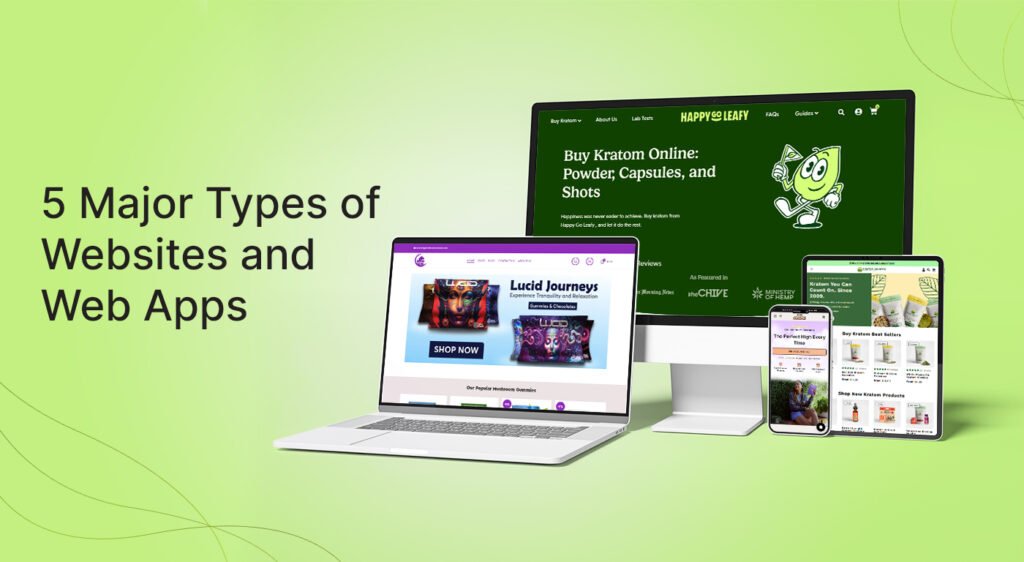
When it comes to custom website development, you get a wide range of choices to run your digital platform. Based on your needs, user base, and business goals, you can choose the right type of website or web app for your business that works the best for you. Let’s discuss the main types of websites and web apps to help you understand which one would be the right option for you:
1. Static Websites and Web Applications
Static websites and web apps are more like an example of a digital poster. Static websites are easier to load and work on. Another great fact about static websites is that they do not require much maintenance. Such types of websites are usually built using HTML, CSS, and some components of JavaScript to make the appearance more appealing.
Maintenance for Your Custom Websites
And E-commerce Store
One noticeable fact about static websites is that they do not require any sort of database connection or updates in real time. This is the reason why these websites are usually fast and responsive on any device.
However, static websites are not suitable if you require complex features, interactive functionalities, or very unique designs. Static websites are commonly suitable for business pages or landing pages where the web page’s content remains consistent or static.
2. Dynamic Web Applications and Websites
Dynamic websites and web apps are the real deal when it comes to experiencing the real meaning of tailor-made solutions. Dynamic websites and web apps provide a real personalization experience where users can interact with personalized content. These changes are based on user interaction which updates the user database, which is connected with the Dynamic website.
Examples of Dynamic websites and web apps can be taken from eCommerce websites or social media platforms. Whenever you make a purchase, the data lands in the database of the shopping cart. Based on the interactions, each time when a user reloads the website page, more personalized content updates.
Dynamic web apps and websites fetch and display real-time data right on the web browser, offering a more interactive experience. For users that require apps like fluency, users get a more engaging experience. These websites are built using back-end technologies such as PHP, Node.js, or Python. Since Dynamic websites are connected to fetch databases in real time, it is much easier for such custom websites to deliver content on the fly.
3. Single Page Web Applications (SPAs)
Tired of waiting for the web pages to load each time you click a link? The Single Page Web Applications (SPA) are the right option for you. Single Page Applications can load a single HTML page which dynamically updates in real-time as users interact with the web app’s contents.
Like Dynamic web apps, Single Page Web Applications also provide a smooth, fast, and seamless user experience. The example can be taken from platforms like Twitter, Gmail, Google Maps, or Facebook. Since single-page websites and web apps can load all the required data in real time upfront, it is not necessary to have full-page reloads.
Single Page Web Applications are best for displaying portfolios or small catalogs. Hence, these websites are incredibly fast and respond efficiently. The only complex fact about single-page websites and web apps is that they are a little tricky to set up and manage. The reason is that these SPAs require a reliable/strong front-end developed in programming languages like React, Angular, or Vue.js.
4. Progressive Web Applications (PWAs)
Progressive Web Applications are more suitable for those businesses that require seamless experience on handheld devices via web browsers. Progressive Web Applications (PWAs) are pretty reliable, fast, and work perfectly offline even when the network is not that stable. With such options, features, and compatibility support, Progressive Websites and Web Applications are much more suitable for smartphones and tablets.
The best thing about Progressive Web Apps is much more interactive as PWAs are capable of sending push notifications. Moreover, these web apps can work with hardware features like a camera, microphone, GPS locations, and more. And the best part? You don’t have to download any dedicated apps as Progressive Web Apps can make it all possible right from the web browser.
So, if you are looking for a website or web app that offers feature-loaded functionalities right from the web browser, then Progressive Web Application Development should be the go-to choice for your business.
5. Enterprise-Based Web Applications
Enterprise level websites are like the elite version of all. These Enterprise web apps are extensive, complex, and built to handle more complex features with massive amounts of data. Businesses like warehouse management systems, financial applications, and corporate-based enterprises can leverage Enterprise website development.
The example can be taken from a CRM system used by the financial sector or large enterprises. Enterprise web applications are designed and developed by keeping scalability, security, and integration in mind. The most prominent feature of such websites is that they often connect with a large network of databases which also includes various third-party services.
On the other hand, one major challenge with enterprise-based web applications is that they require a lot of maintenance, technical knowledge, and experienced developers to set up. All of these services go for a long term, which makes the large-scale operations run more efficiently.
How Much Does Custom Website Development Costs?

Finally, it all comes down to budgeting and making the right decision according to it. When it comes to custom website development, the cost factor does not depend on a single or a couple of things. So let us break down the factors influencing the costs of custom web design and development.
Complexity of Features or Functionalities
The number or complexity of functionalities in your website will define how much it’s going to cost overall. For example, a Single Page Web Application costs much less than a Progressive Web Application. A static website can cost anywhere between $5,000 to $15,000. In comparison, dynamic web applications include interactive elements, authentications, and databases, costing you between $15,000 to $50,000.
Websites with highly complex features and integrations such as AI models, advanced analytics, or augmented reality features are categorized as enterprise-level websites or web apps. This is the point where a website or a web app can cost even more than $100,000, with a starting cost of $50,000. Again, it depends on what you want or don’t want on your website.
Technology Stack
The technology you use to build your website also varies the costs of custom website development. For example, reliable frameworks like React.js or Next.js combined with a backend like Node.js could raise your development costs.
This is the point where you also have to find a custom web developer with certain capabilities, experience, and expertise in the technology stack. The rarer the skillset, the higher the cost of hiring the web developer.
User Experience (UX) and Design
User experience and website design are one of the most important factors in custom website development which keeps the user hooked on the web page. This is the point where you get a lot of options like choosing a static website with just images on the front end or choosing something interactive with visuals and animations.
Based on your choice, the costs for design will affect the overall cost of custom website development. For a rough estimate, UI/UX design can cost anywhere between $5,000 to $20,000. The cost of user experience and design depends on how much you prioritize the level of detail in visuals and user interactivity on your website.
Project Timeline
The last but not the least factor that affects the total cost of custom website development is the timeline. The sooner you will require your custom website, the more amount it will cost to develop. A short timeline with strict deadlines puts developers on the pressure end, pushing them to work extra yet over time. Therefore, companies should expect to pay premium prices to get things done faster.
FAQs
What is the Most Important Thing in Custom Website Development?
The most basic thing to begin with custom website development is learning the HTML and CSS concepts. In addition to HTML and CSS, JavaScript is one of the main elements in website development. After learning these 2 languages, one can become capable of developing front-end and back-end.
Is the Custom Website the same as the Custom Web Portal?
A custom website and custom web portal are not the same thing. A web portal web app is designed for businesses related to consumer fields such as warehouse management systems or education systems. For example, a customer care portal or a student LMS for school/college education. Hence a custom website is used for accessibility to the public, while custom portal web apps are more related to web apps.
Which Language is Best for Custom Website Development?
There is no single winner when it comes to the “best” website development language. The ideal choice of web development language depends on the type of services you require from your website, web app, or web portal. Still, the necessary languages are HTML, CSS, JavaScript, Python, and PHP. These languages are further assisted by frameworks like PHP Laravel, ASP.NET, Angular, React.JS, Ruby on Rails, and Express.JS.
Conclusion
Custom website development brings a range of benefits for businesses by delivering tailor made solutions that perfectly align with their requirements. With billions of online websites, standing out from the ordinary has become a necessity for businesses to get a competitive edge in a saturated market.
Build Your Custom Website and Store
By following a more structured approach guided by software development lifecycle, from gathering requirements and planning through to design, development, testing, and deployment, custom web developers can build winning apps that drive productivity and innovation. With the guidelines, steps, and examples mentioned in this article, hopefully you will be able to build future ready websites and web apps.


